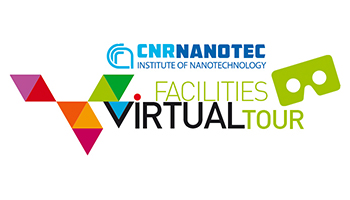Tapered optical fibers technology for multifunctional neural interfaces*
Abstract
Last decade has seen the development of different technologies to interface with sub-cortical regions of the mouse brain with multiple functionalities, with the main goal to obtain fully integrated implantable devices enabling optical control and monitor neural activity, extracellular readout and localized drug delivery. These approaches include the use of integrated optoelectronic elements on both flexible or stiff substrates, multifunctional polymeric optical fibers, micro and nanophotonic circuits, as well as tapered optical fibers [1-11]. After a review of the state-of-the-art in this field, this presentation will focus on the engineering and use of multifuntional tapered optical fibers to control and monitor neural activity using only one optical waveguide with reduced invasiveness. The technology exploits mode-division demultiplexing operated by a millimeters-long taper that allows to redirect and/or collect light over different brain regions and subregions [11]. Exploiting micro and nanotechnologies to structure the highly curve surface of the fiber taper, it is possible to engineer the stimulation and the collection volume, as well as to realize multiple electrodes for extracellular electrophysiology along the taper. The simplicity of this technique, together with its versatility and reduced invasiveness, indicate this approach can greatly complement the set of existing methods for multifunctional neural interfaces with deep brain regions.
References
[1] Grosenick et al, Neuron 86, 106 (2015);
[2] F. Pisanello et al, Frontiers in neuroscience 10, 70 (2016);
[3] Wu et al, Neuron 88 1136 (2015);
[4] Scharf et al, Scientific Reports 6, 28381 (2016);
[5] Moretti et al, Biomedical Optics Express 7, 3958 (2016);
[6] Lee et al, Nat. Methods 12, 1157 (2015);
[7] F. Pisanello et al Neuron 82, 1245 (2014);
[8] M. Pisanello et al Biomedical Optics Express 6, 4014 (2015);
[9] F. Pisanello et al, Nature Neuroscience 20, 1180 (2017);
[10] M. Pisanello et al, Scientific Reports 8, 4467 (2018);
[11] F. Pisano et al, Nature Methods 16, 1185 (2019)
*This work is done in collaboration with Filippo Pisano, Marco Pisanello, Barbara Spagnolo, Leonardo Sileo, Antonio Balena, Marco Bianco, Emanuela Maglie, Suk J. Lee, Jaeeon Lee, Gil Mandelbaum, Bernardo Sabatini, Massimo De Vittorio
Short Bio: Ferruccio Pisanello is tenured senior scientist at the Center for Biomolecular Nanotechnologies of the Italian Institute of Technology (IIT), coordinating the research line on “Multifunctional Neural Interfaces with Deep Brain Regions”. His lab strives at developing new paradigms to interface with the central nervous system, exploiting physical phenomena in unconventional ways to realize a new generation of devices able to gather multifunctional signals from the brain and to control its physiology. Ferruccio received a Master degree in telecommunication engineering at the University of Salento in Lecce and a PhD in Physics at the Université Pierre et Marie Curie in Paris, with a work on single photon generation with colloidal nanocristals. He joined the IIT in 2011, and since then he focuses on the development of new technologies for the brain based on implantable optical waveguides.
